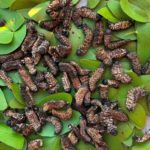Asian honey bees and their combs are a special treat for the local population of backcountry areas at Pu Luong Nature Reserve in northern Vietnam. The harvested honey is seldom sold and is mainly used by the villagers. The grubs, which are instar larvae and pupae of various stages, will be extracted from the combs and are a delicacy in their kitchen.
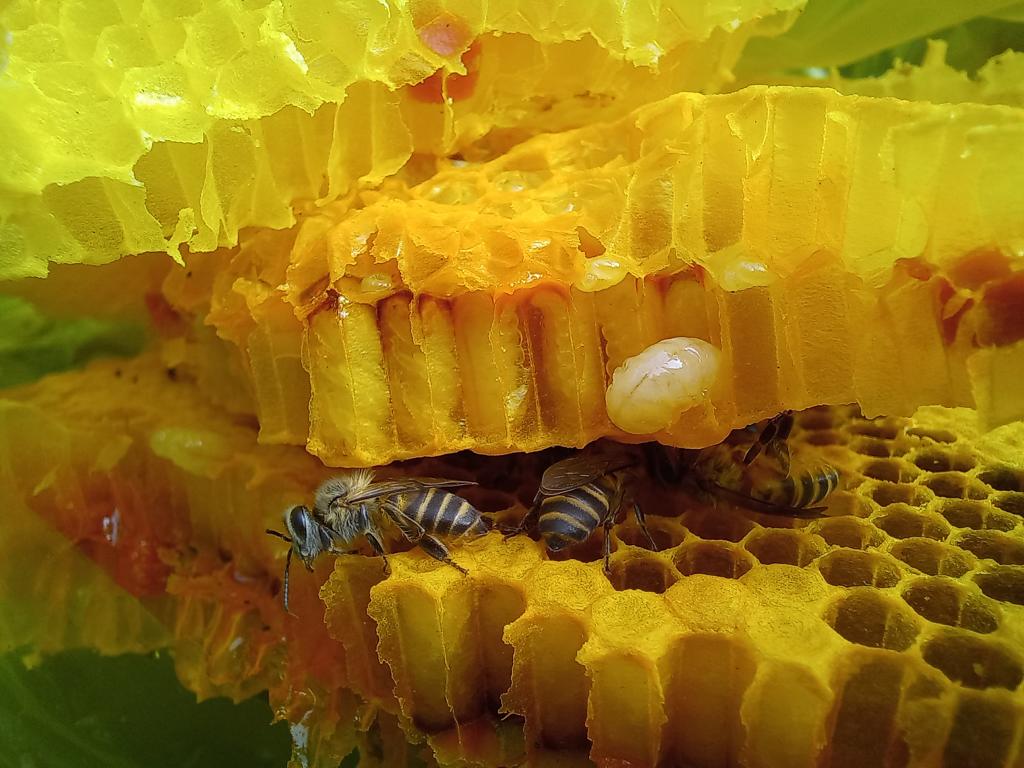
Description and distribution
Apis cerana is slightly smaller than the Western honey bee (Apis mellifera). Apis cerana workers have four abdominal stripes, whereas A. mellifera workers have only three dark stripes. They build hives with parallel wax combs and live in colonies of approximately 20,000 bees. They fly faster and more erratically than Western honey bees. Asian honey bees cannot be managed for honey production due to their frequent swarming and tendency to abscond.
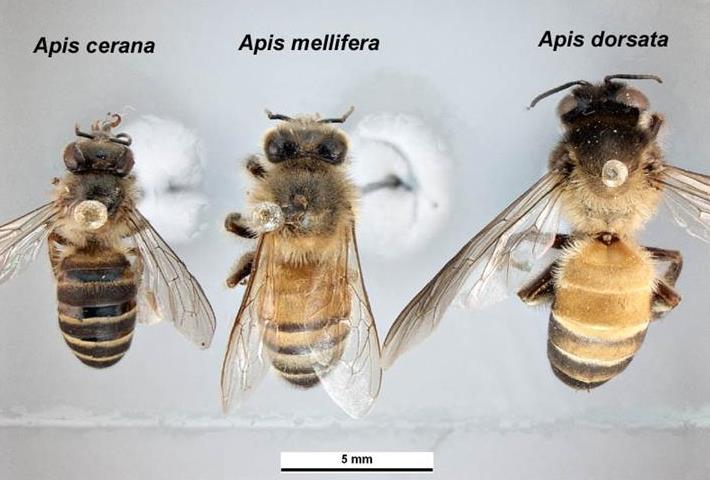
The native distribution of Asian (or Eastern) honey bees ranges from Pakistan to Sakhalin Island, north of Japan, and as far south as Indonesia. They have already invaded Papua New Guinea and are found in Northern Queensland, around Cairns. Asian honey bees are considered an invasive species in Australia, as they are able to spread Varroa mites and Nosema ceranae parasites.

The subspecies we harvested in northern Vietnam belong to the Apis cerana Northern (I) morpho-cluster.

Finding and dislodging Asian honey bees
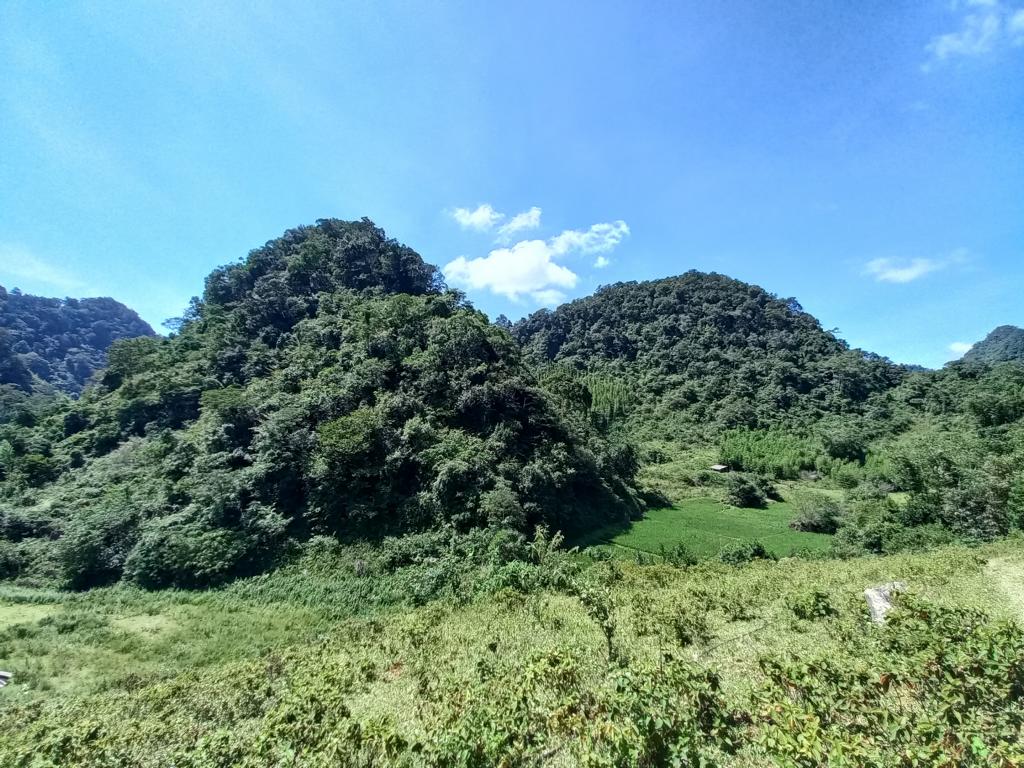
Local people stay in open areas and spot bees carefully. Tracing them back to their hive is difficult, as they fly quickly and erratically. The biggest problem at the place we were harvesting was an overabundance of leeches on the ground.

There, it is only possible to stay temporarily at a certain place and constantly remove the leeches from the gum- or walking boots. The boots must be sprayed with diluted fertilizer, and the person should stay on a piece of giant bamboo whenever possible.

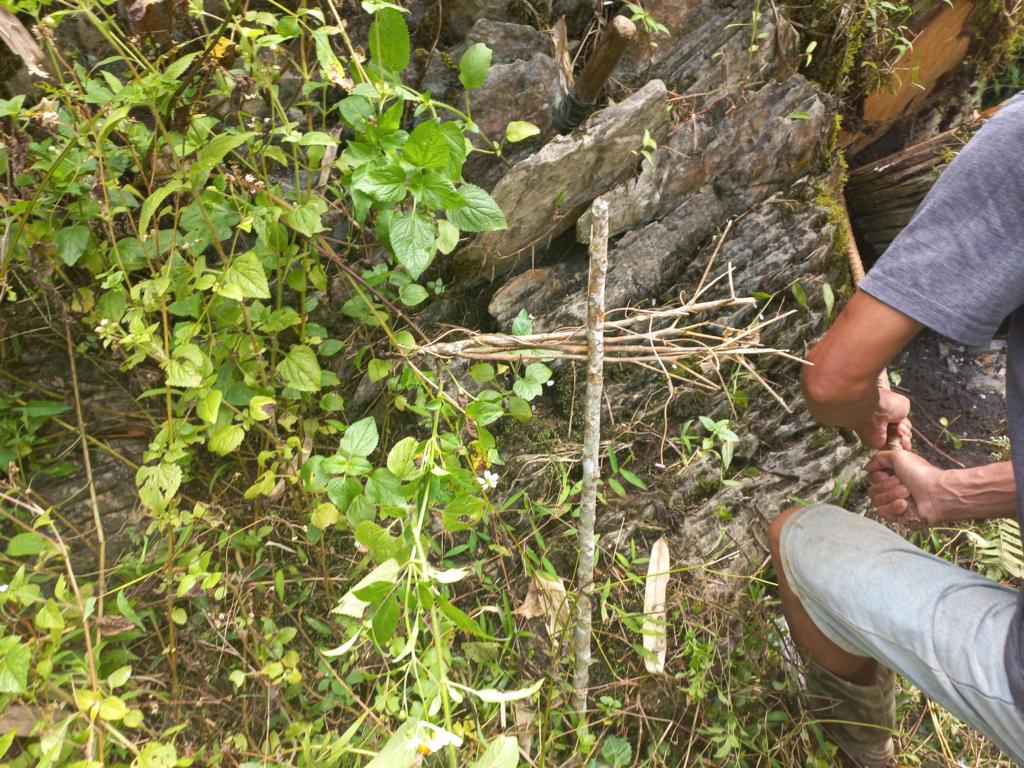
When an entrance to a hive is found, the finder erects an easily visible wooden cross to indicate his ownership of the hive. This sign is observed by everybody in the area.
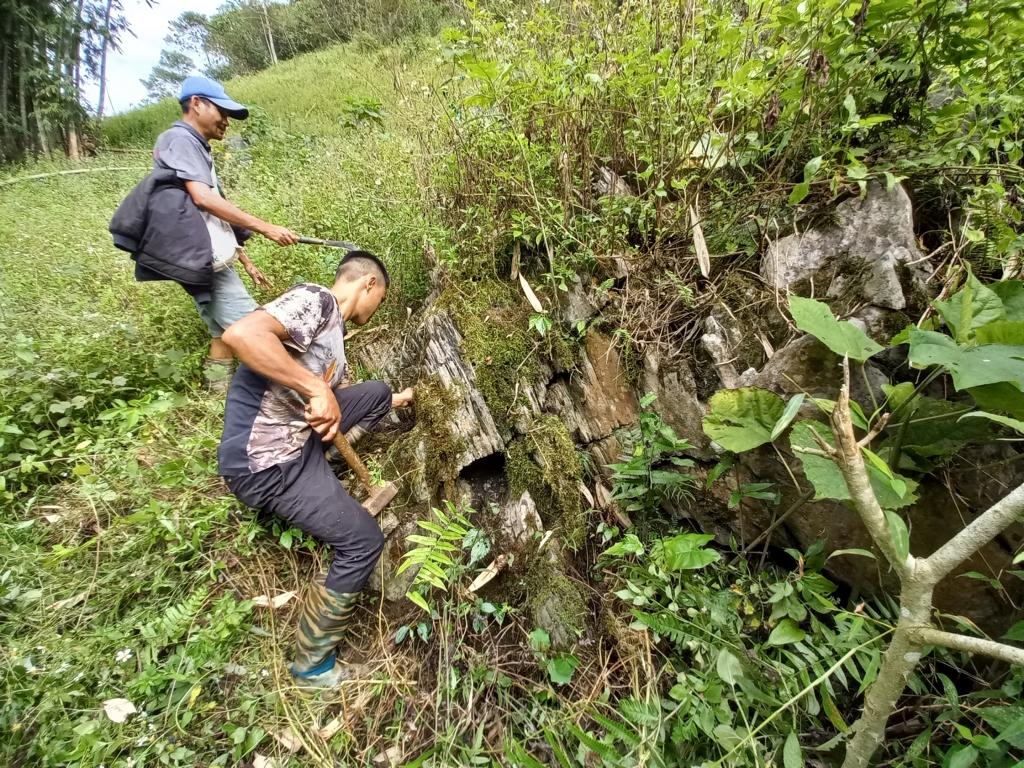
After reaching the rock crevice where the bees had their hive, we opened the entrance with a sledgehammer and a steel bar. To my big surprise, the bees were very docile, even timid. None of us was stung by them, even when the hive owner removed the combs.
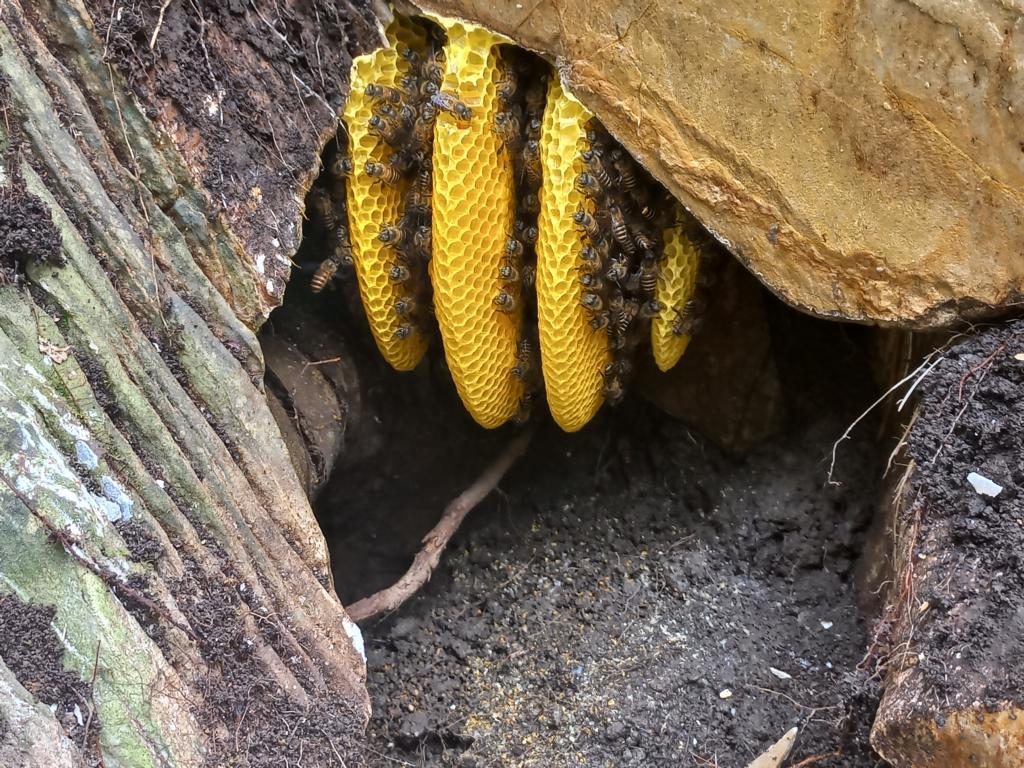
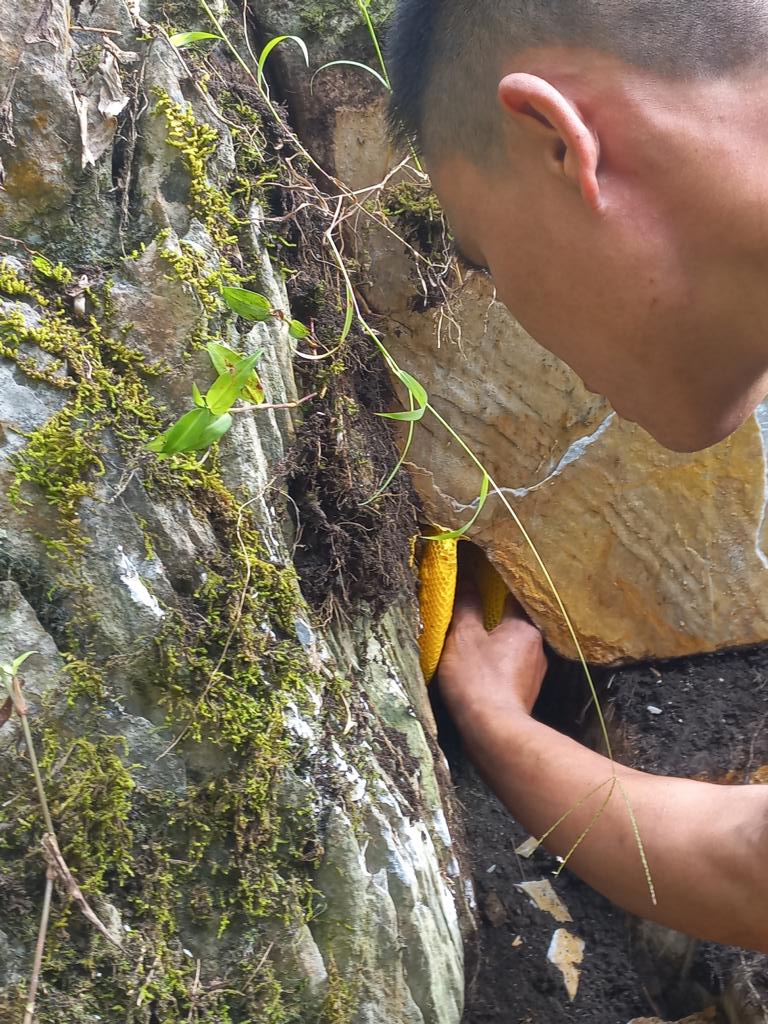
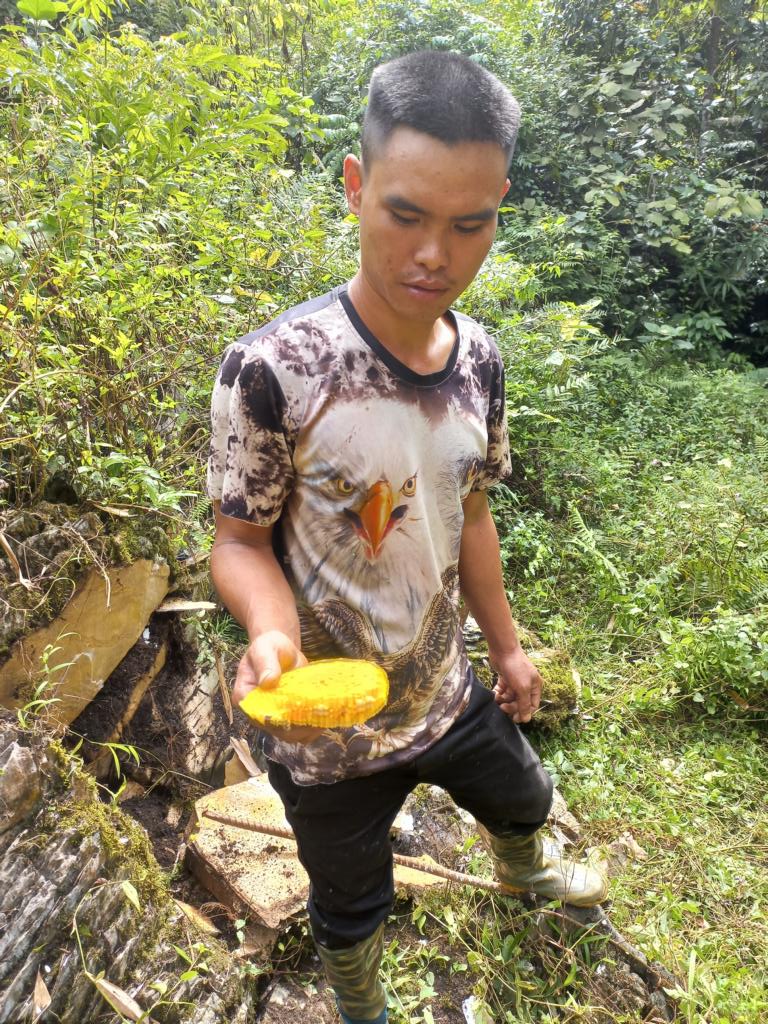
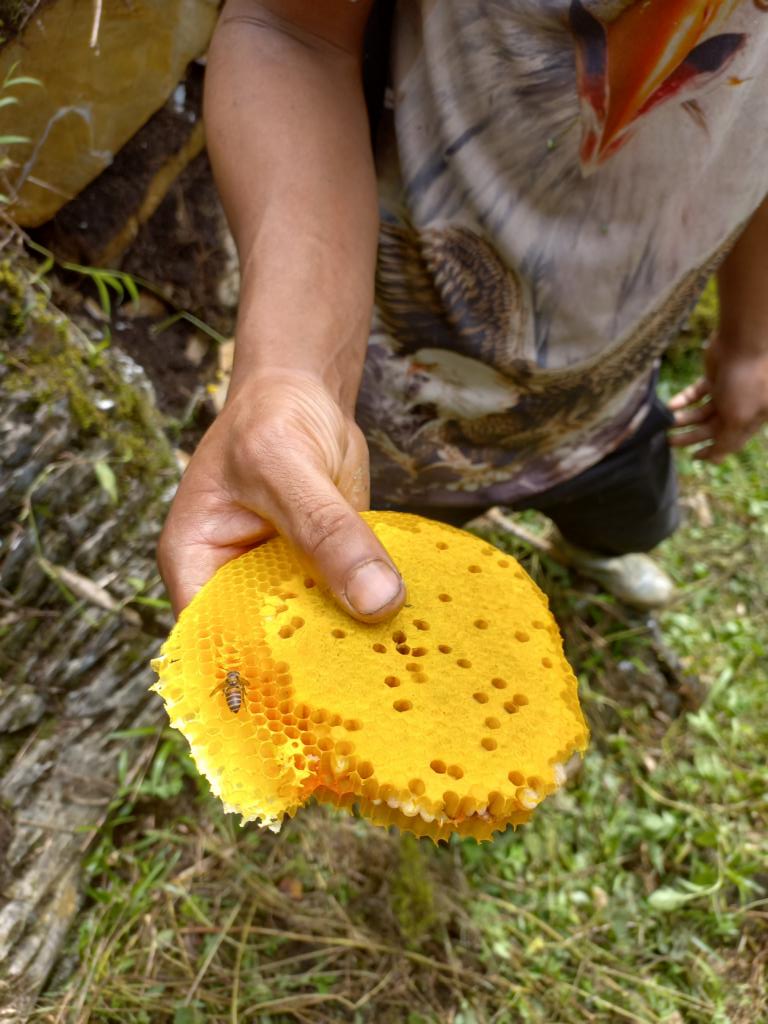
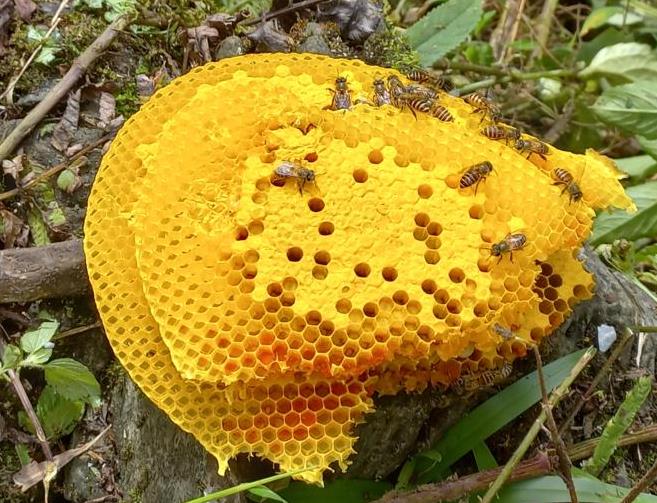

Ultimately, we left one comb full of honey inside the hive and barricaded it with rocks. The bees will find a new entrance through the stones stacked on top of each other. Palm civets and other predators in this area will not be able to break open the stone layer, and sun bears seldom exist in that area.
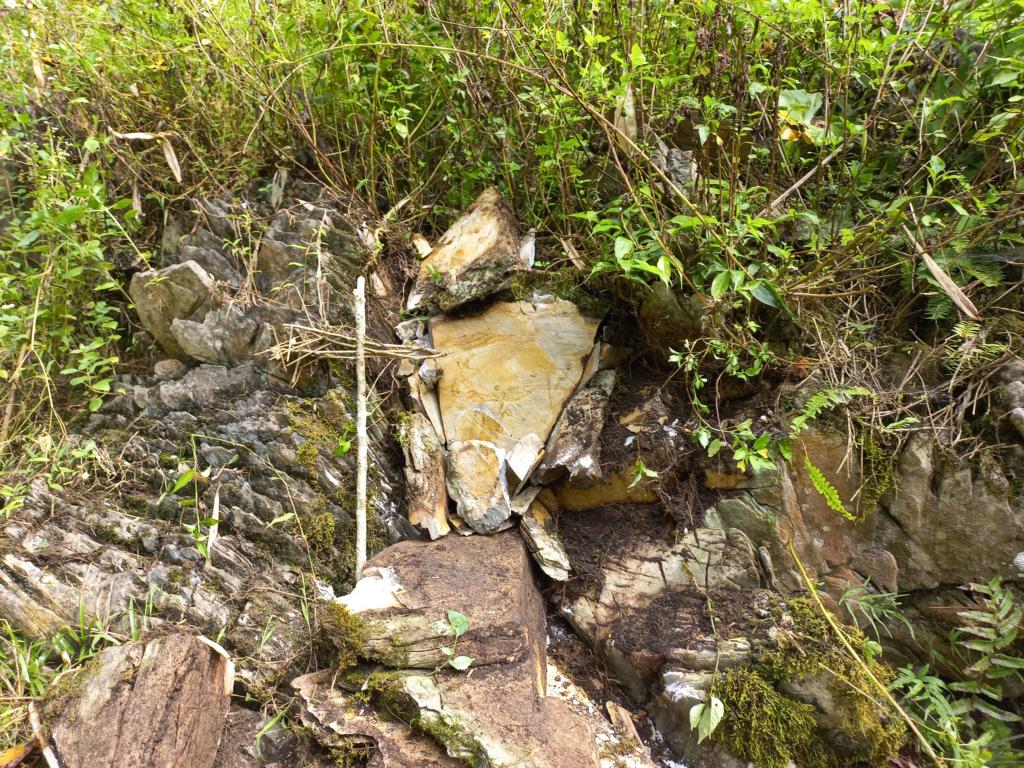
Not only is the honey eaten…
Honey is devoured by both old and young and is also used for its antibacterial properties on wounds. But most highly relished are the ‘grubs.’ These are any of the five instar stages of larvae, the larvae itself, and the three pupae stages. Additionally, the wax is molten to make candles.
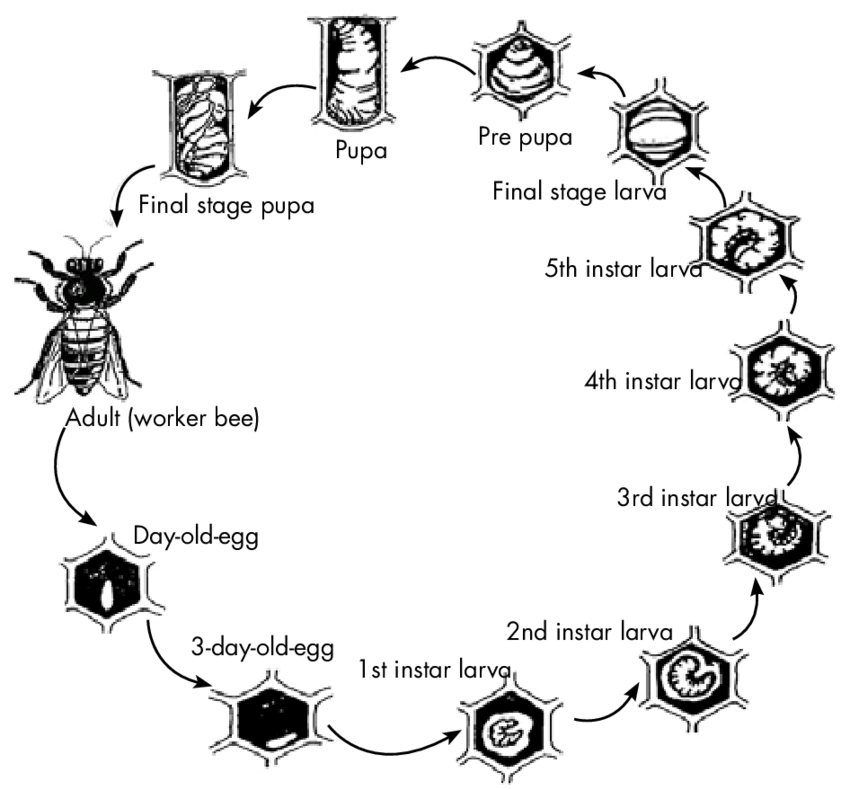
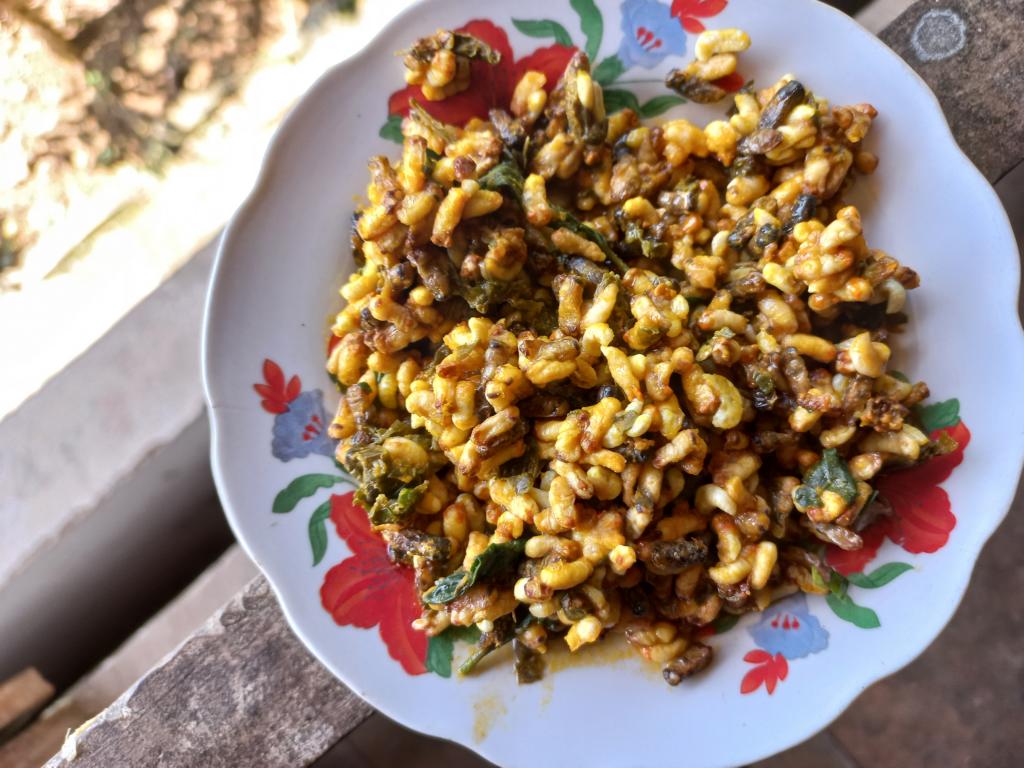
Typical dish made from bee ‘grubs’ by villagers in northern Vietnam. This dish contains larvae instars, larvae, and pupae in all life cycle stages.
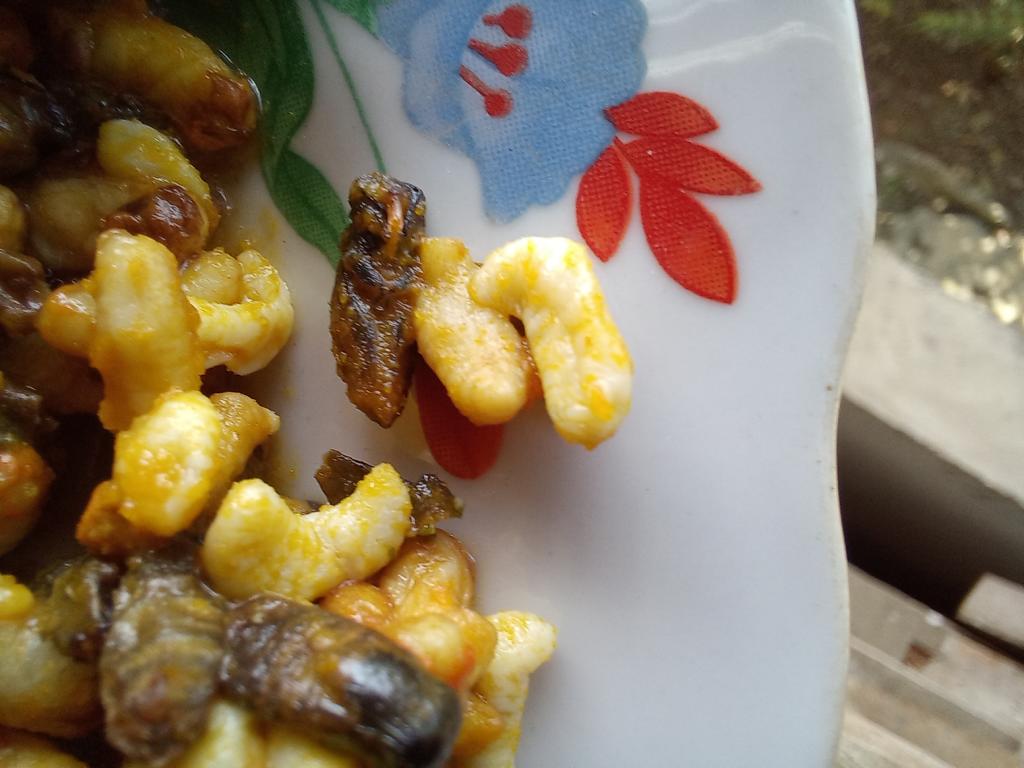
The honeycombs devoid of honey and grubs will be molten and used in the refined stage as a filling material for cracks and holes in tools and implements or for creating candles.
Lessons learned from harvesting Asian honey bees in a rock crevice:
- Apis cerana are a wilder species of honey bees than Apis mellifera
- Asian honey bees fly faster, erratic, and swarm more often than Western honey bees.
- These bees are very docile and did not sting when we removed their combs from the hive.
- After robbing the hive, at least one honey-ladden comb should be left with the population. The entrance is barricaded against predators.
- Bee grubs are a favorite dish for northern Vietnamese villagers.
Further readings about bees on this website:
Alternative beehives in D.R. Congo
Improvised protective equipment for beekeepers
Wax extraction from honeycombs
Sweat bees – not a danger, but a nuisance
Stingless bee honey collected by Hadza people
.



